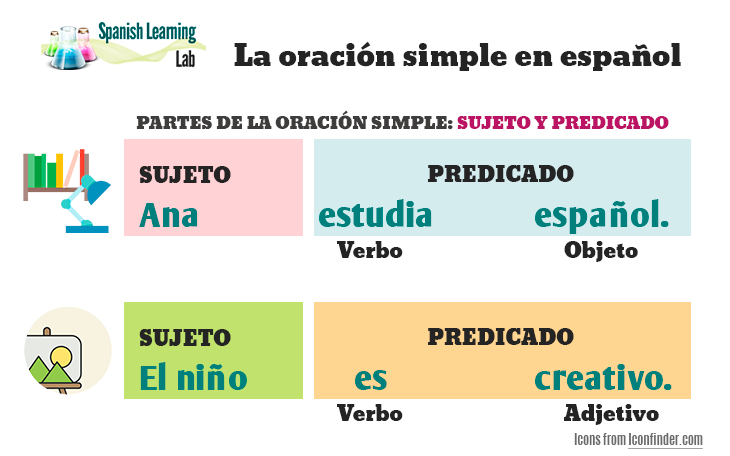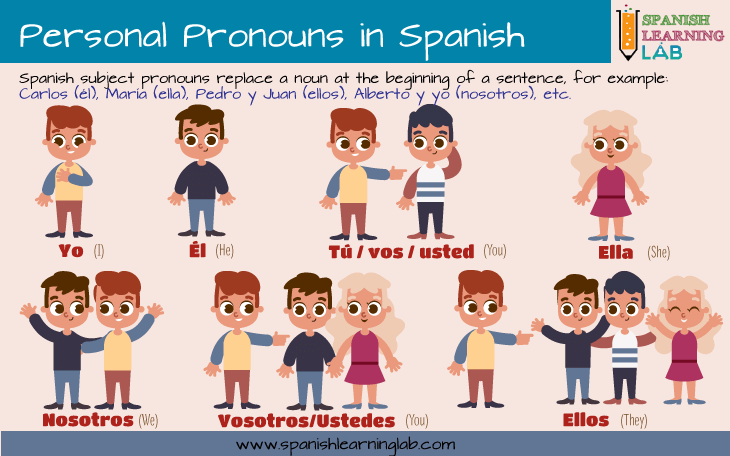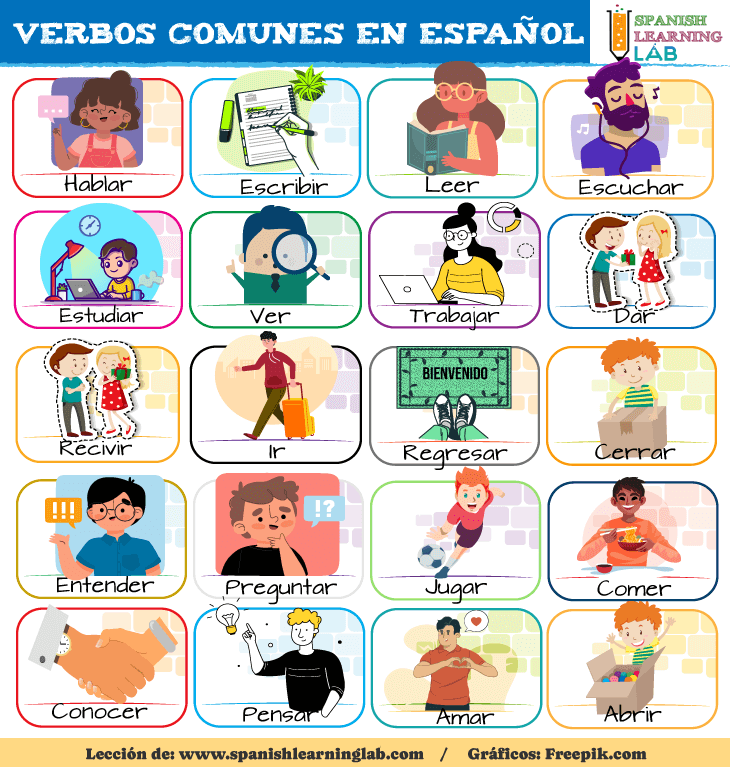Hello! Welcome to a new lesson. In this lesson, we will focus on the basic concepts to form or make basic sentences in Spanish. We will study different parts of speech, provide interesting examples and also give you the chance to practice with an interactive grammar quiz on this very important topic. Let’s start…
What are sentences in Spanish? What are the parts of a simple sentence?
The word “ORACIÓN” is used to refer to “a sentence” in Spanish. Interestingly, this word can also be used as both “Prayer” and “Sentence”. Grammatically speaking, “una oración” is a syntactic structure formed by a subject and a predicate. It may sound strange, but the definition applies to both English and Spanish. In general terms, sentences in Spanish are formed by placing a subject first, then adding a verb and finally adding a complement. Also, do not forget to add a period at the end of your sentences and begin with a capital letter.

El sujeto:
“El sujeto” is the subject of the sentence. As you can see, grammar terms in both languages usually sound alike. Just like in English, the subject will be the name of a person, a place, an object and very commonly a subject pronoun like “Yo”, “Tú”, “Él” and so on.

El verbo:
“El verbo” refers to an action, a process or a state. For instance, verbs are things we do every day like “Dormir” (sleep), “Correr” (to run) or words we use to describe people or states like “Ser” (to be). Next, we show you a list of really common verbs in Spanish through this nice collection of images. In order to use them in sentences, they will often be conjugated to fit the subject and tense that you choose.

El complemento:
“El complemento” is what we place after the verb. In basic Spanish sentences, we will often add an object, that is food, places, etc., or an adjective like “bonito” and “interesante”.
How to make sentences in Spanish: Examples and Practice
The following group of basic sentences in Spanish will use verbs related to actions. The first two will use the names of people as the subject of the sentence, which you could replace with personal pronouns like the ones in the picture above. Know that sometimes you will need to add prepositions and/or a definite/indefinite article after the verb, depending on what verb you are using.
|
Carmen juega futbol.
Carmen plays football
|
|
Alberto va al cine.
Alberto goes to the cinema
|
|
Yo como uvas.
I eat grapes
|
It is really important that the subject agrees with the verb in the sentence. Otherwise, the sentence will sound odd. Remember that we have regular verbs and irregular verbs in Spanish, and it is extremely necessary to know the rules to conjugate regular verbs, as well which verbs are considered irregular in the language.
|
Ella estudia español.
She studies Spanish
|
|
Francisco cocina bien.
Francisco cooks well.
|
|
Ana es inteligente.
Ana is intelligent.
|
The second sentence above uses the adverb “bien” (well) and the adjective “inteligente” as the complement. As you probably know, ES is one of the forms of the irregular verb SER and this kind of simple sentences in Spanish are really common in everyday conversations. Before moving on to practice, keep in mind that you can make basic sentences in different tenses including the present tense, the past tense and future tense as shown in the three examples below.
|
Rubén escribió “Azul”.
Ruben wrote “Azul”
|
|
Arturo vendrá mañana.
Arturo will come tomorrow.
|
|
Ingrid llamó ayer.
Alan is intelligent.
|
That’s all for now. We hope you learned a couple of things from this lesson. In future lessons, we will cover other types of sentences in Spanish and more essential grammar topics in more detail. See you soon!
Related Spanish Worksheets:
- Basic Sentence Structure in Spanish
- Subject Pronouns in Spanish
- Conjugating -AR Regular Verbs in Spanish (Present)
- Conjugating -ER Regular Verbs in Spanish (Present)
- Conjugating -IR Regular Verbs in Spanish (Present)
- Spanish Verbs Conjugation (Present Tense) – PDF Worksheet
- The Conditional Simple in Spanish – PDF Worksheet
- The Imperfect Tense in Spanish – PDF Worksheet
- The Structure of Spanish Sentences – PDF Worksheet
